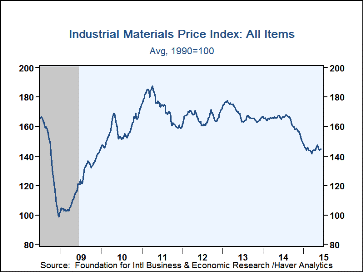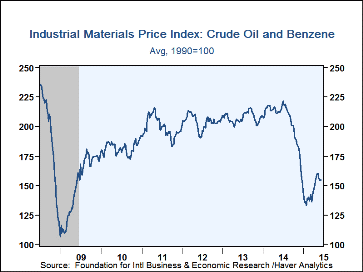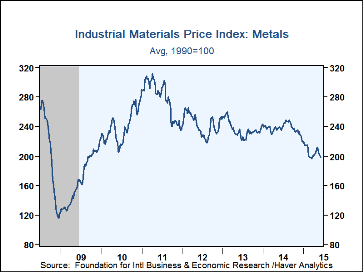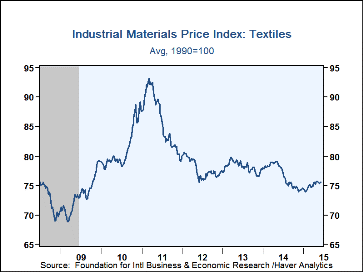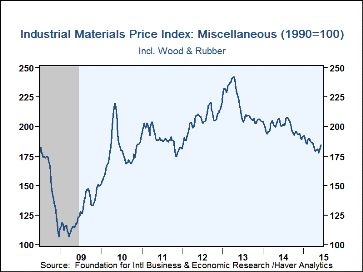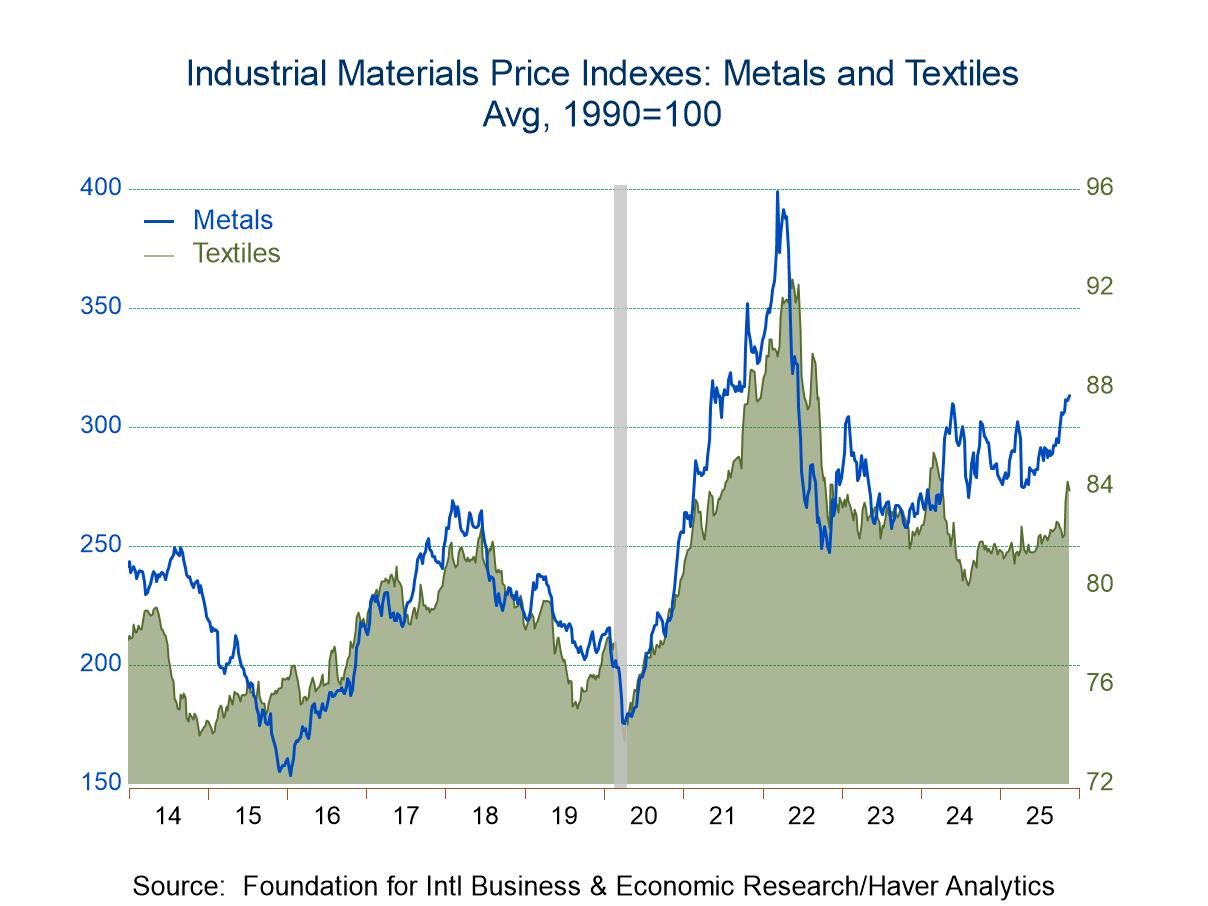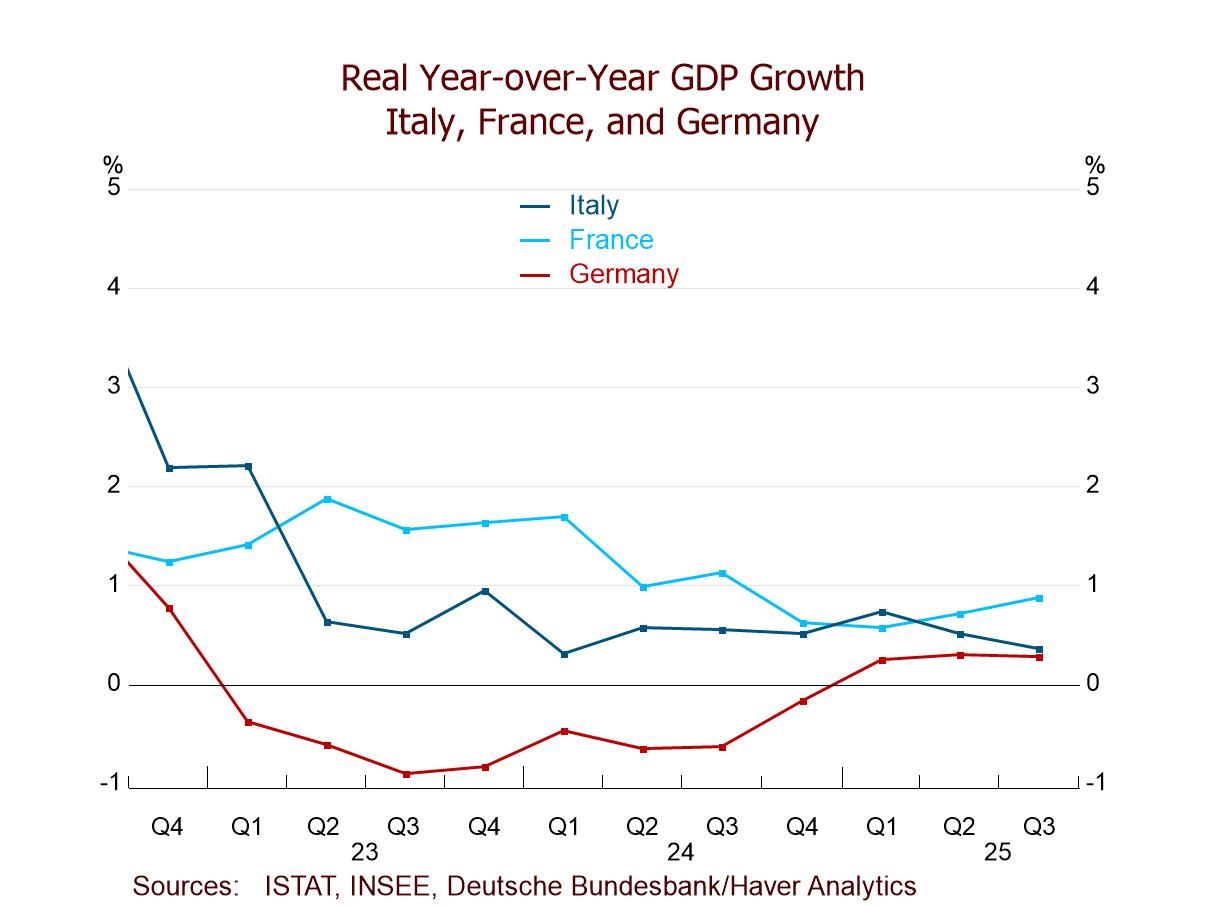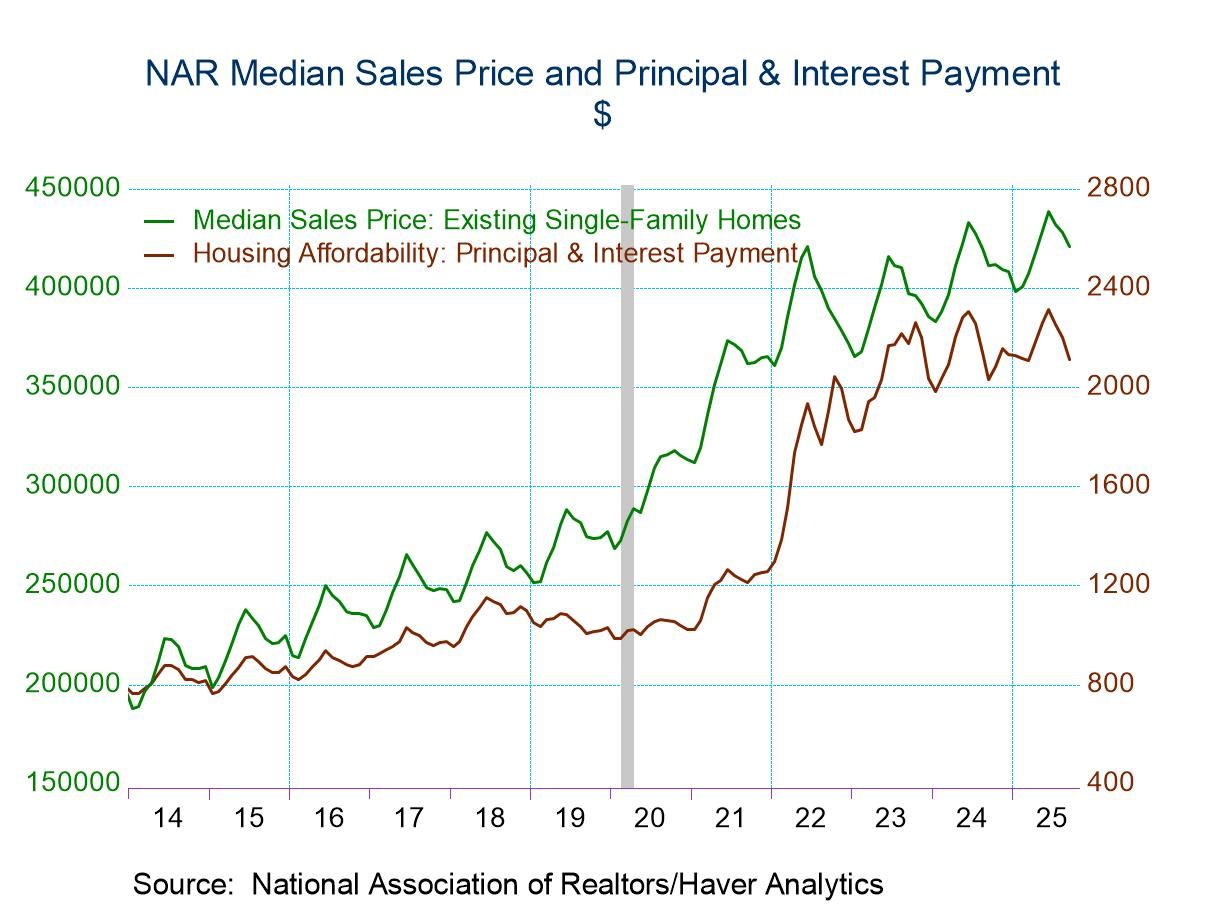 Global| Jun 17 2015
Global| Jun 17 2015FIBER: Industrial Commodity Prices Move Sideways
by:Tom Moeller
|in:Economy in Brief
Summary
The industrial commodity price index from the Foundation for International Business and Economic Research (FIBER) moved in a narrow range during the last month. Erratic sideways movement also is in evidence for most of this year, as [...]
The industrial commodity price index from the Foundation for International Business and Economic Research (FIBER) moved in a narrow range during the last month. Erratic sideways movement also is in evidence for most of this year, as it has been for factory sector production.
Within the sector groupings of prices, the FIBER measures show divergent patterns. Earlier price improvement in the crude oil & benzene grouping leveled off. The price for a barrel of WTI crude oil has traded near $60.00 since early-May. It remained up, however, versus the January low of $44.43. Prices for the petro-chemical benzene tailed off from the highs early in May, remaining down 44% y/y. In the metals sector, prices recently weakened substantially. Aluminum prices declined 14% since early last month, leaving them near the low level of early 2014. Steel scrap prices also remain near the lowest level since the end of 2009 (-30.2% y/y), despite an uptick during the last two weeks. Copper scrap prices recently reversed all of an improvement since late February. Lead prices similarly reversed an earlier gain. Prices in the textile sector showed comparatively more strength by trending sideways since for most of this year. Cotton prices lost steam after strengthening early in the year, though burlap prices (5.3% y/y) continue to improve. Prices in the miscellaneous materials grouping recently rebounded after steadily declining through late last month. Framing lumber prices moved higher after falling to the lowest point since the middle of 2012 and structural panel prices also strengthened very recently after weakening sharply since last Augusts. Natural rubber prices had relative strength moving 20.7% higher since mid-October, off a low base. They remained down by one-half from the 2011 peak.
Support for commodity prices may be on the way. The current industrial output projection from the National Association for Business Economics calls for 2.3% production growth in 2015 followed by a 3.0% rise next year. This year's projected increase is diminished, however from earlier expectations. During the last ten years, there has been a 52% correlation between the three-month change in prices and the change in industrial output.
Commodity price data can be found in Haver's DAILY, WEEKLY, USECON and CMDTY databases.
| FIBER Industrial Materials Price Index (1990=100) | 06/16/15 | Y/Y % | 2014 | 2013 | 2012 |
|---|---|---|---|---|---|
| All Items | 144.15 | -12.7 | 163.5 | 169.0 | 166.3 |
| Textiles | 75.38 | -3.8 | 76.8 | 78.2 | 77.8 |
| Cotton (cents per pound) | 61.40 | -24.4 | 73.6 | 79.6 | 74.4 |
| Metals | 194.55 | -17.2 | 237.8 | 236.2 | 242.7 |
| Aluminum ($ per metric ton) | 1,660.00 | -7.9 | 1,864.9 | 1,846.7 | 2,016.6 |
| Copper Scrap (cents per pound) | 261.22 | -14.5 | 311.7 | 332.3 | 360.3 |
| Steel Scrap ($ per ton) | 249.33 | -30.2 | 358.3 | 345.8 | 366.5 |
| Crude Oil & Benzene | 154.76 | -28.0 | 205.2 | 207.7 | 204.0 |
| Crude Oil (WTI, $ per Barrel) | 59.89 | -43.8 | 93.5 | 97.9 | 94.2 |
| Miscellaneous | 185.08 | -7.3 | 199.6 | 218.3 | 205.2 |
| Framing Lumber ($ per 1000 board ft.) | 332 | -10.5 | 383 | 383 | 321 |
| Natural Rubber (cents per pound) | 138.33 | -5.7 | 140.2 | 190.0 | 211.8 |
Tom Moeller
AuthorMore in Author Profile »Prior to joining Haver Analytics in 2000, Mr. Moeller worked as the Economist at Chancellor Capital Management from 1985 to 1999. There, he developed comprehensive economic forecasts and interpreted economic data for equity and fixed income portfolio managers. Also at Chancellor, Mr. Moeller worked as an equity analyst and was responsible for researching and rating companies in the economically sensitive automobile and housing industries for investment in Chancellor’s equity portfolio. Prior to joining Chancellor, Mr. Moeller was an Economist at Citibank from 1979 to 1984. He also analyzed pricing behavior in the metals industry for the Council on Wage and Price Stability in Washington, D.C. In 1999, Mr. Moeller received the award for most accurate forecast from the Forecasters' Club of New York. From 1990 to 1992 he was President of the New York Association for Business Economists. Mr. Moeller earned an M.B.A. in Finance from Fordham University, where he graduated in 1987. He holds a Bachelor of Arts in Economics from George Washington University.


